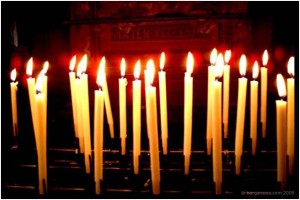 Many Italian proverbs, especially regarding the weather, are associated with this day. One of the most popular sayings is, “Per la Santa Candelora se nevica o se gragnola, dell’inverno siamo fora, ma se è sole o solicello, siamo sempre a mezzo inverno”
Many Italian proverbs, especially regarding the weather, are associated with this day. One of the most popular sayings is, “Per la Santa Candelora se nevica o se gragnola, dell’inverno siamo fora, ma se è sole o solicello, siamo sempre a mezzo inverno”
– For the Holy Candelora, it it snows or if it rains, we are through with winter, but if there is sunshine or even just a little sun, we are still in the middle of winter’.
In English-speaking countries, where the feast of Candelora is known as Candlemas Day (or Candle Mass), the saying is similar to the Italian: If Candlemas day be sunny and bright, winter will have another flight, if Candlemas day be cloudy with rain, winter is gone and won’t come again.
Per la candelora
Se piove e se gragnola
Dal l’inverno ne siam fòra
Se sole e solicello
Siamo sempre a mezzo inverno
Traditionally the Western term “Candlemas” (or Candle Mass) referred to the practice whereby a priest on 2 February blessed beeswax candles with an aspergilium for use throughout the year, some of which were distributed to the faithful for use in the home.
So what is the connection between these symbolic religious celebrations and the weather?
The answer is – Astronomy.
The transition point between seasons. February 2 is a cross-quarter day, halfway between the winter solstice and the spring equinox.
For millennia, people in the Northern Hemisphere have noted that if the sun comes out at the mid-way point between winter and spring, winter weather would continue for another six weeks. As one might imagine, for humans living a subsistence existence the difference was an important one, with implications for survival as well as hunting and crops. It is not surprising that rituals and celebrations were linked to it. source Wikipedia and The Florentine
Click on the link above to hear Natale Bertolini recite the Candelora poem (in Italiano)

